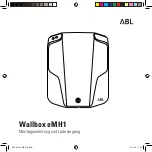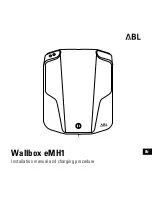
SABICs are a supplement to the seat belt re-
straint system. SABICs deploy in less time than
it takes to blink your eyes.
WARNING!
•
Occupants, including children, who are up
against or very close to SABICs can be
seriously injured or killed. Occupants, in-
cluding children, should never lean on or
sleep against the door, side windows, or
area where the side air bags inflate, even if
they are in an infant or child restraint.
•
Seat belts (and child restraints where ap-
propriate) are necessary for your protec-
tion in all collisions. They also help keep
you in position, away from an inflating
SABIC. To get the best protection from the
SABICs, occupants must wear their seat
belts properly and sit upright with their
backs against the seats. Children must be
properly restrained in a child restraint or
booster seat that is appropriate for the size
of the child.
•
Do not stack luggage or other cargo up
high enough to block the deployment of the
SABICs. The door trim below the side
windows where the SABIC and its deploy-
ment path are located should remain free
from any obstructions.
(Continued)
WARNING! (Continued)
•
SABICs need room to inflate. Do not lean
against the door or window. Sit upright in
the center of the seat.
•
Being too close to the SABICs during de-
ployment could cause you to be severely
injured or killed.
•
Relying on the SABICs alone could lead to
more severe injuries in a collision. The
SABICs work with your seat belt to restrain
you properly. In some collisions, SABICs
won’t deploy at all. Always wear your seat
belt even though you have SABICs.
NOTE:
Air bag covers may not be obvious to you,
but they will open during air bag deploy-
ment.
The SABICs may help reduce the risk of partial
or complete ejection of vehicle occupants
through side windows in certain side impact
events.
The Occupant Restraint Controller (ORC) moni-
tors the internal circuits and interconnecting
wiring associated with electrical Air Bag System
Components listed below:
Air Bag System Components
•
Occupant Restraint Controller (ORC)
•
Air Bag Warning Light
•
Steering Wheel and Column
•
Instrument Panel
•
Knee Impact Bolsters
•
Driver and Front Passenger Air Bags
•
Supplemental Side Air Bags
•
Front and Side Impact Sensors
•
Seat Belt Pretensioners
•
Seat Track Position Sensors
•
Seat Belt Buckle Switch
•
Occupant Classification System
If A Deployment Occurs
The front air bags are designed to deflate im-
mediately after deployment.
NOTE:
Front and/or side air bags will not deploy in
all collisions. This does not mean something
is wrong with the air bag system.
If you do have a collision which deploys the air
bags, any or all of the following may occur:
•
The air bag material may sometimes cause
abrasions and/or skin reddening to the occu-
pants as the air bags deploy and unfold. The
abrasions are similar to friction rope burns or
those you might get sliding along a carpet or
gymnasium floor. They are not caused by
contact with chemicals. They are not perma-
nent and normally heal quickly. However, if
31
Summary of Contents for Viper 2017
Page 2: ......
Page 3: ......
Page 5: ...2...
Page 45: ...42...
Page 100: ...Overview 8 4 NAV Temperature Controls 97...
Page 107: ...Operating Tips Chart 104...
Page 113: ...110...
Page 180: ...8 MAINTENANCE SCHEDULES MAINTENANCE SCHEDULE 178 177...
Page 181: ...MAINTENANCE SCHEDULE Refer to the Service And Warranty Handbook for maintenance schedules 178...
Page 182: ...9 IF YOU NEED CONSUMER ASSISTANCE IF YOU NEED ASSISTANCE 180 179...
Page 184: ...181...
Page 185: ...182...
Page 186: ...10 INDEX 183...
Page 200: ...8...
Page 201: ......
Page 202: ......
Page 204: ...7 9 9 B 9 B...
Page 205: ...I B I...
Page 206: ......
Page 207: ......
Page 234: ...8 4 1 5 0 6 O v T Ry 2 E H O 7 E H 3 R 5 I2 8 R 2 4 2 9 5 O RO eI2 eR 5...
Page 247: ......
Page 282: ...X...
Page 384: ...F G H J 8 L H 9 M 9 G...
Page 385: ......
Page 386: ...2 3 4 5 67 8 9 7 9 9 B 8...
Page 387: ......
Page 388: ......
Page 389: ...Viper 1 7 Z D 1 2 6 A R A A A...
















































